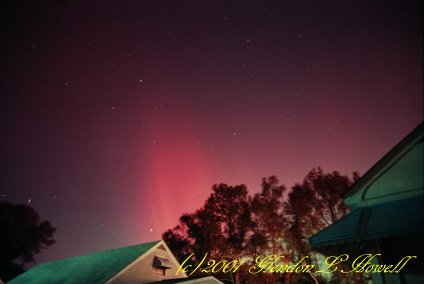
NAS Members Photograph The
Aurora Borealis Of Nov. 5, 2001
Last revised 11/06/2001

About 10 PM Monday night, NAS member Glen Howell stepped outside with the family dog to witness this brilliant crimson glow just to the northwest of the north star Polaris. The stars of Cygnus lie just above the Aurora Borealis, the Northern Lights. Exposures were all from 15 to 60 seconds on Fujicolor Super G 800 Plus film.
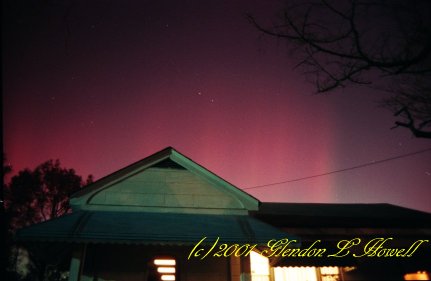
After alerting family and calling some friends, Glen stepped out with his camera to get these photos. The aurora covered much of the northern sky by now and was easy to see so long as you stayed away from street lighting.
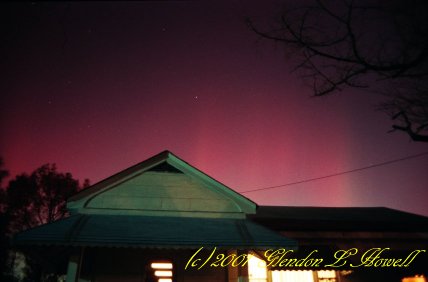
Crimson curtains soon covered the northern sky, and even naked eye strong curtain lines could be glimpsed despite local street lighting and the Last Quarter moon hampering the true magesty of the show.
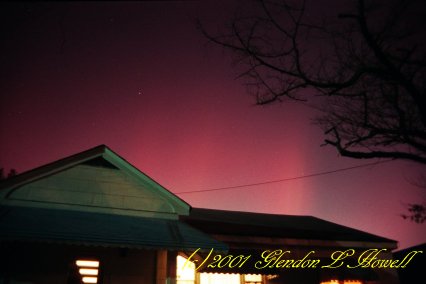
By10:30 PM, the show had reached all of the way up to the zenith (directly overhead) from the north. This display dwarfed the display of April 6, 2000 both in brilliance and duration.
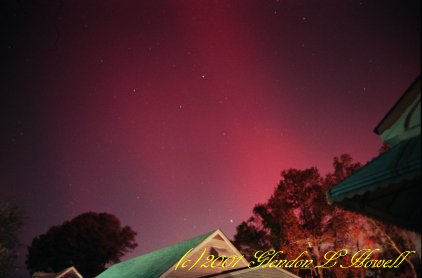
By11:30 PM, the show had pretty much ended for those of us in the city but in reality the show may have continued on much longer under darker skies.
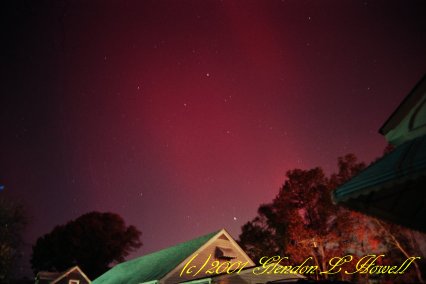
The Aurora Borealis are caused by charged particles expelled from our Sun that take 2 days or so to travel to Earth and are then trapped by our Geomagnetic Field that generally deflects them toward the magnetic poles. When major flares occur, the Van Allen Belts which capture much of these charged particles become over saturated and dump these charged particles into our upper atmosphere, causing its gasses to glow.
An easy analogy to help understand aurorae is the Neon lamp where high voltage charges are applied to each end of the tube that causes the gas inside to glow as charges flow through it. For the aurorae, the gasses excited are primarily the largest constituents of our atmosphere, Nitrogen and Oxygen.
Aurorae are visible more often that most people realize, and indeed I have seen as many as 6 displays within a one year interval from dark rural North Carolina. Displays like this one visible within the city are much much rarer due to unnecessary skyglow created by unshielded lighting.
--- GLH